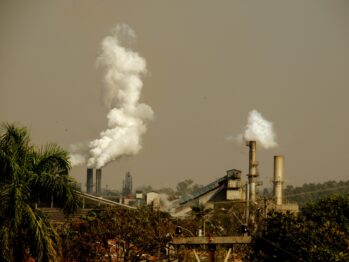Corporate action, government strategy and consumer changes are key to reducing emissions in a sustainable and effective manner. With corporations being entities designed for profit, it can be hard to push them towards sustainable practices without a carrot and a stick approach. But with the advent of emission trading schemes, companies are now finding financial incentives and disincentives in the form of emissions caps.
One such scheme — the emission trading scheme (ETS) — in Surat shows that such an approach can work in India.
What is an ETS?’
The ETS is a government-backed cap-and-trade system where authorities impose caps on the amount of pollution or emissions that industries can release in a particular time period. Companies meet these caps by either investing in technologies or changing some aspect of their value addition process to check emissions.
Larger companies often manage to cut significant portions of their emissions through investments and are way under the set limit. These companies with an ‘excess limit’ of emissions can then sell these ‘limits’ to other companies in the form of ‘emission permits.’ Emission permits then allow the buyers of those permits to release more than their standard cap of emissions as long as the additional amount of pollution released is either equal to or under the emission permit.
What is the case in Surat?
The ETS scheme in Surat was launched in 2019, when the city was chosen for the pilot project. The system was formulated by researchers from the Economic Growth Center at Yale University, the Energy Policy Institute at the University of Chicago (EPIC), and The Abdul Latif Jameel Poverty Action Lab (J-PAL).
Surat was chosen to be the pilot city due to the concentration of heavy industries and the presence of one of the largest industrial clusters in the country. The Gujarat Pollution Control Board (GPCB) set the cap on the total mass of suspended particulate matter emissions at 276 tonnes per industrial unit across all 350 units in the city.
The cap was based on assessment from the government’s Continuous Emissions Monitoring Systems (CEMS), which would also actively monitor the emissions released by the industrial units and provide transparency and prevent corruption.
During the initial trading, the GPCB distributed 80 percent (220.8 tonnes worth of emissions) of permits free to 150 participant industries. The remaining permits were auctioned through the National Commodities and Derivatives Exchange Limited e-market.
















